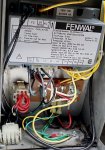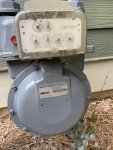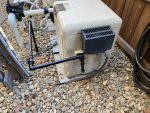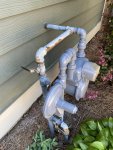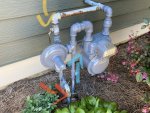This may be related to my previous issue, but I'm at wits end trying to figure out what could be my issue now.
 www.troublefreepool.com
www.troublefreepool.com
For the past few weeks I can not get my heater to stay lit for more than a second.
When I got to the EasyTouch Panel and turn on the heater for the SPA, everything starts up normally.
The heater and blower turn about 20 seconds later, the gas valve flips with a noticeable click, the gas ignites, the exhaust pipe rumbles for about a second because its burning fuel, momentary heat, then no more rumble as if the flame is extinguished. The heater try agains, exact same thing happens, 3 more times, then finally the Service Heater light comes on.
From my last post, I knew how to dig into the heater immediately to check for diagnostic LEDs.
I am receiving absolutely zero diagnostic LEDs on the back of the control board and the Fenwal Ignition Board doesn't have any blinking lights (like it did last time).
The EasyTouch reports no issues and there are no diagnostics codes on the startup of the heater.
It appears as if everything is working, but in fact it doesn't stay lit.
Is there a silent failure on one of the sensors somewhere?
What in the world could be causing this? Nothing has changed with my setup outside of winter arriving and the pool/spa cycling through frost protection when its below 36 degrees.
No mice this time either, all mouse proofed, all the wires look great.
From my previous maintenance about 3 months ago:
Thanks for any troubleshooting advice.
I have no idea what to do next, there isn't an obvious sensor issue that the heater is reporting.
SOLVED: MasterTemp 400 Service Heater Light
Hi there, I have a 4-year of Mastertemp 400. Recently, we discover a family of mice were living in the heater and had urinated all over the control boards internally. The heater would turn on, the blow would turn on, and then the heater would fail to light and eventually light of the...
For the past few weeks I can not get my heater to stay lit for more than a second.
When I got to the EasyTouch Panel and turn on the heater for the SPA, everything starts up normally.
The heater and blower turn about 20 seconds later, the gas valve flips with a noticeable click, the gas ignites, the exhaust pipe rumbles for about a second because its burning fuel, momentary heat, then no more rumble as if the flame is extinguished. The heater try agains, exact same thing happens, 3 more times, then finally the Service Heater light comes on.
From my last post, I knew how to dig into the heater immediately to check for diagnostic LEDs.
I am receiving absolutely zero diagnostic LEDs on the back of the control board and the Fenwal Ignition Board doesn't have any blinking lights (like it did last time).
The EasyTouch reports no issues and there are no diagnostics codes on the startup of the heater.
It appears as if everything is working, but in fact it doesn't stay lit.
Is there a silent failure on one of the sensors somewhere?
What in the world could be causing this? Nothing has changed with my setup outside of winter arriving and the pool/spa cycling through frost protection when its below 36 degrees.
No mice this time either, all mouse proofed, all the wires look great.
From my previous maintenance about 3 months ago:
- Replaced Fenwal Ignition Control Board
- Verified grounds are clean and in good working order
- Replaced the Hot Surface Ignitor
- Replaced High Limit Switch
- Replaced Thermal Regular and Thermsistor (Just verified regulator looks and works good)
Thanks for any troubleshooting advice.
I have no idea what to do next, there isn't an obvious sensor issue that the heater is reporting.


